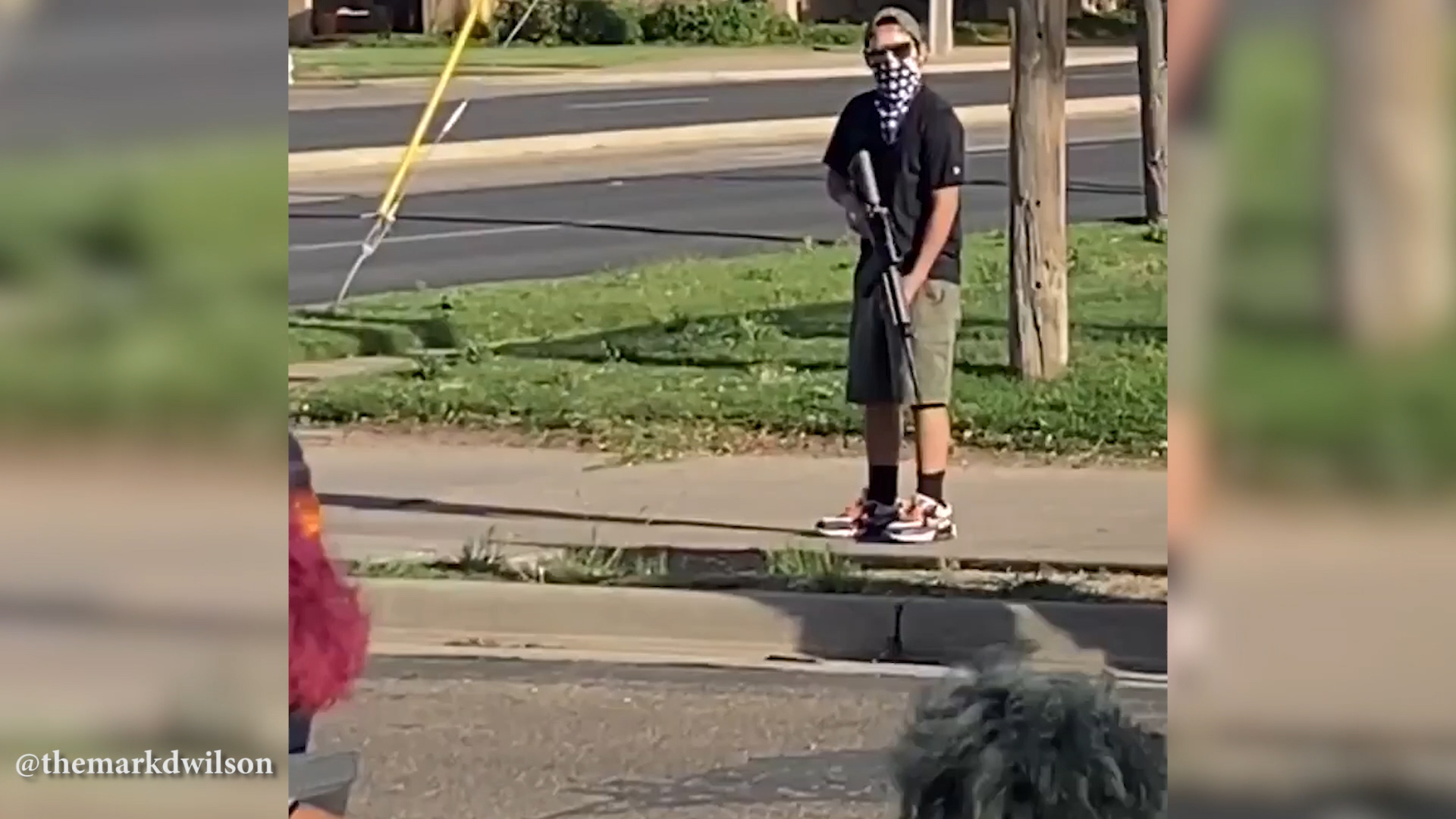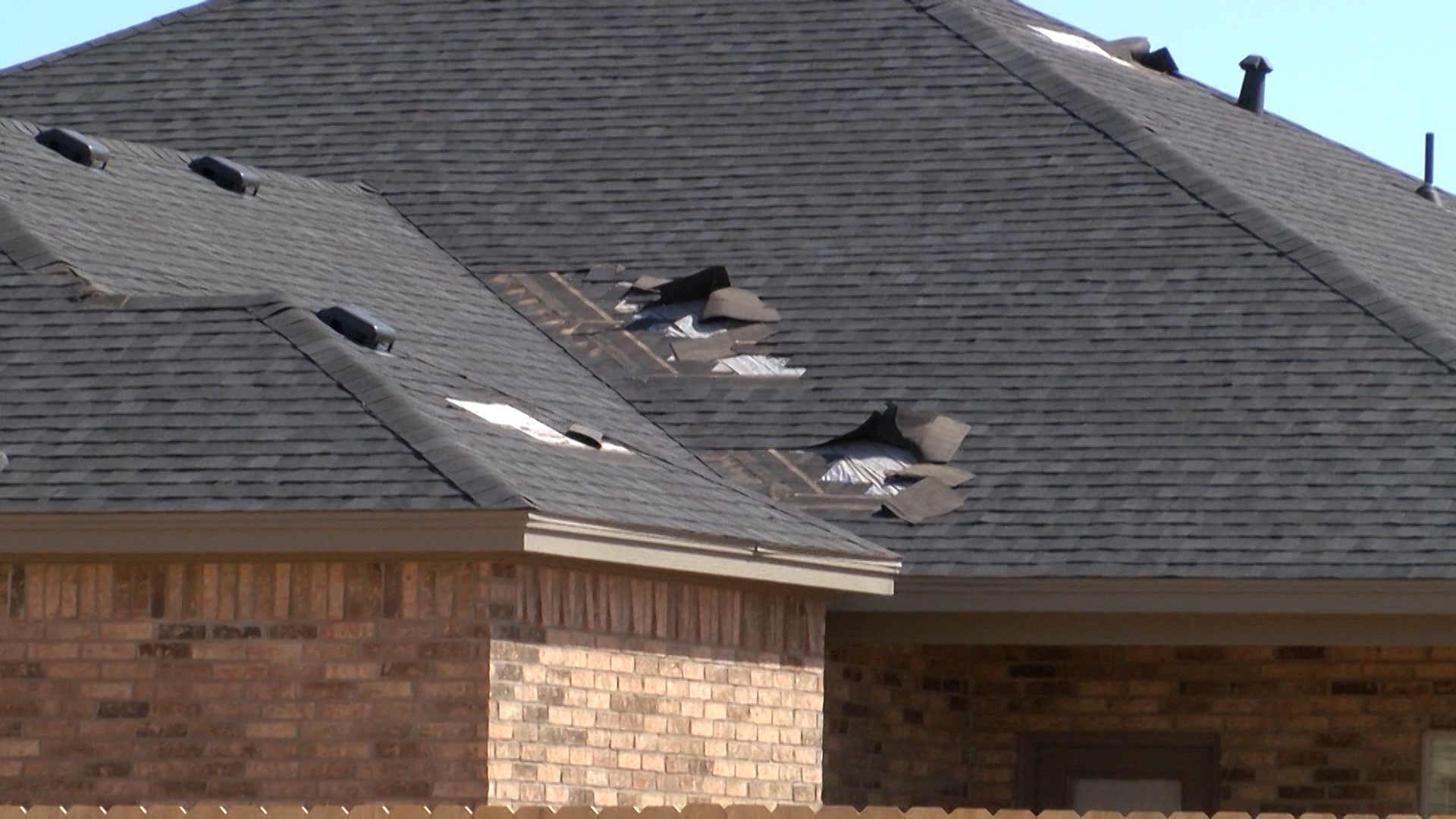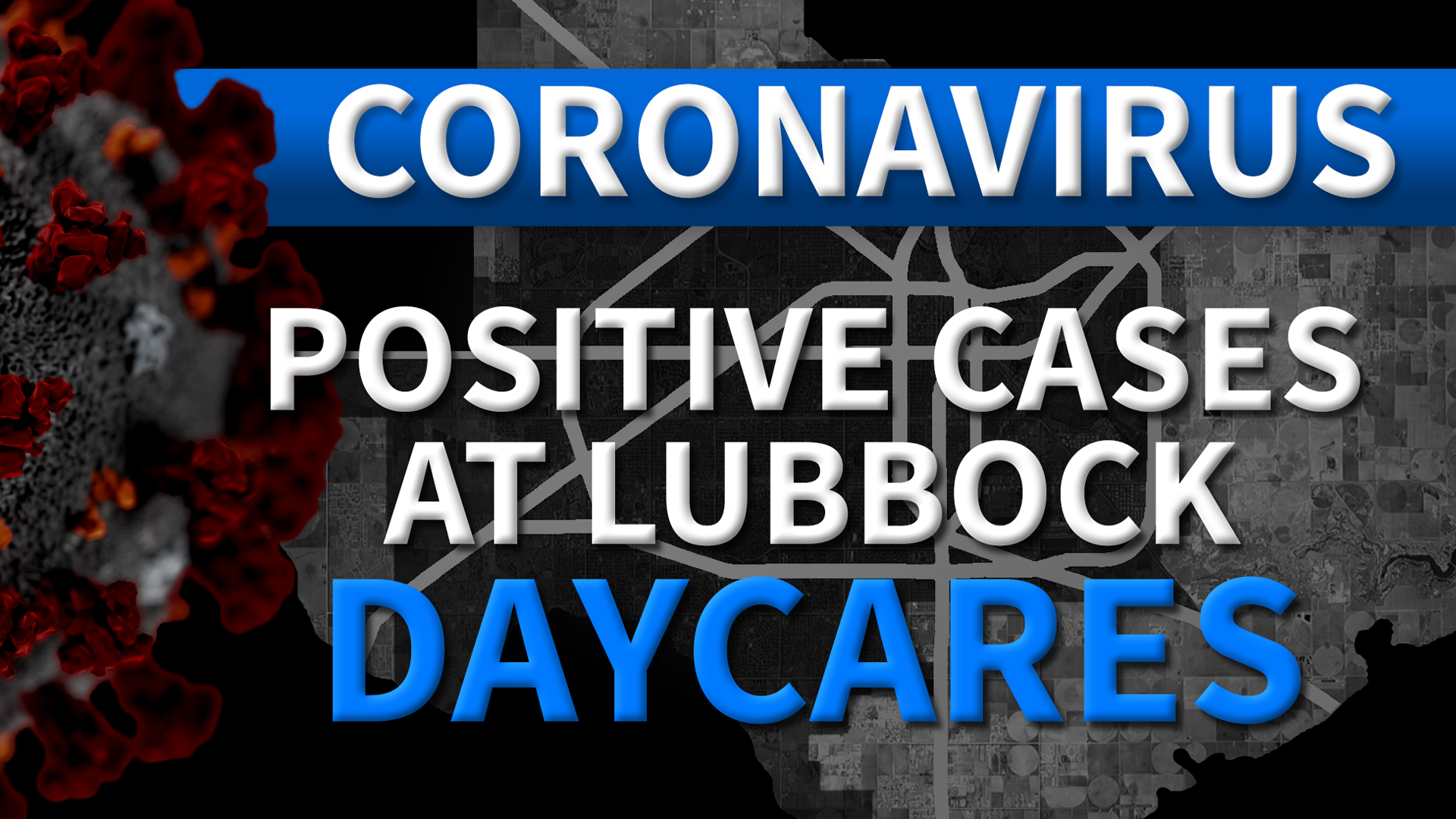LUBBOCK, Texas (KXAN) — Complete silence filled Jessie Cayton’s eighth-grade classroom. She was sitting at her desk between periods when a fellow teacher appeared in the doorway. Standing beside her was one of Cayton’s students she had taught earlier in the day. He looked distraught.
“He needs to talk to you,” the teacher told Cayton.
Cayton, 32, is an English teacher at Cavazos Middle School in Lubbock. She prides herself on building close relationships with students, but this particular student was pretty private. The teenager always kept to himself and was never one to open up. Today was different.
As soon as he sat down, he started sharing things about his life she never knew before, including a time he had self-harmed. Cayton kept listening and could tell by the troubling words he was using, he was in a dark place. A state of crisis.
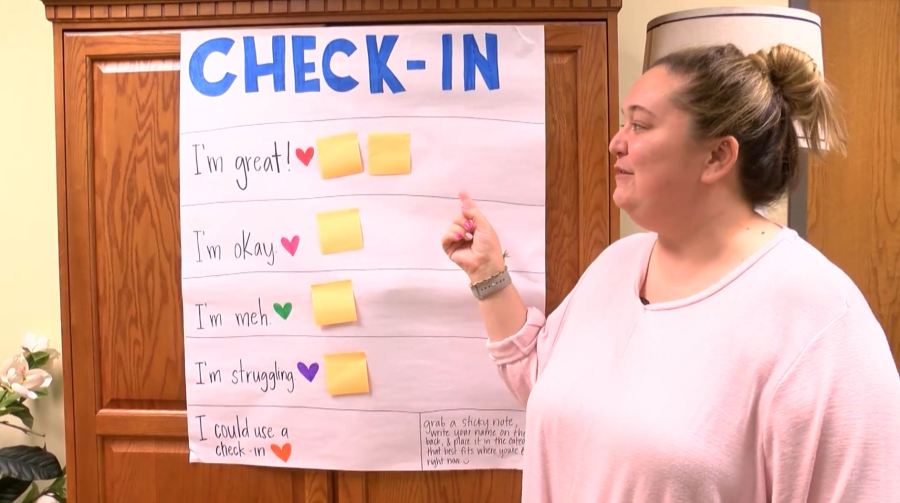
He went into detail about a traumatic event that had just happened at home, and then explained how once he got to school a friend said something “crappy” which made him feel even worse. It was quickly becoming too much for him to handle, and when he ran into that other teacher in the hallway all he could blurt out was, “Take me to Ms. Cayton.”
Cayton said it’s a moment she will never forget because deep down she feels like she helped stop him from taking drastic measures to hurt himself.
“Who knows what would’ve happened later?” Cayton said.
But the question was “why?” Why did this teenager decide to talk to his English teacher on this particular day at this particular moment?
She remembers the student’s words clearly.
“I know you care. You wouldn’t do this thing if you didn’t,” he said.
How it works
The thing he was referring to was a process Cayton started incorporating into her classroom routine after spring break last year. She created a mental health check-in board to provide a way for students to anonymously express how they were feeling on any given day.
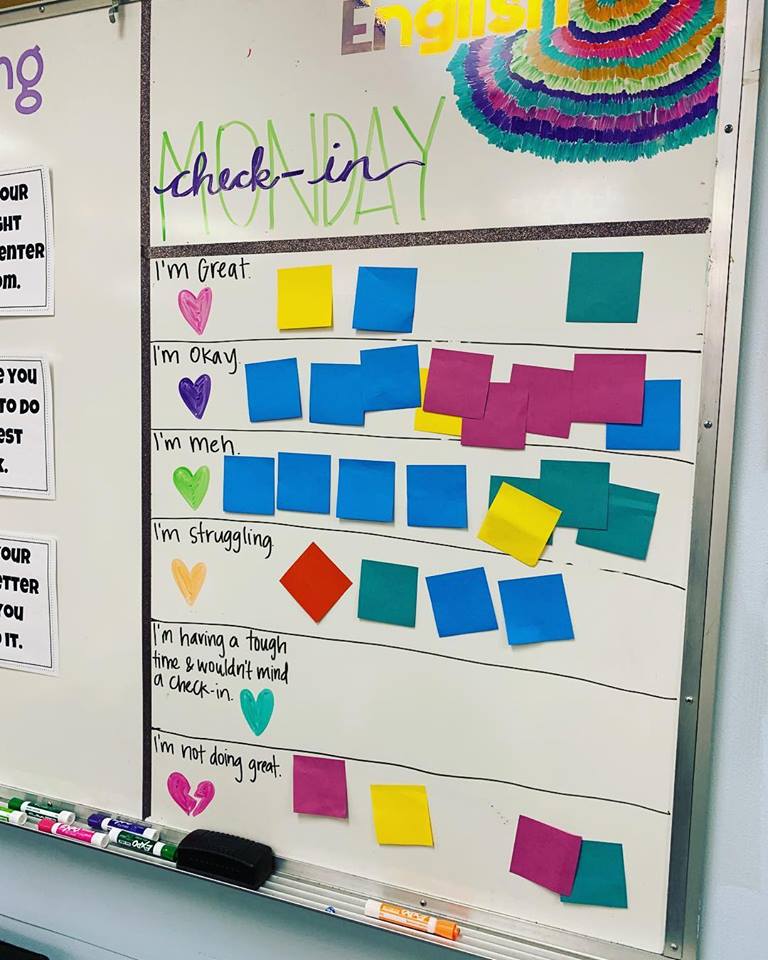
The concept was simple and easy to do. She took a dry-erase marker and created six rows. Each row contained a different mood:
- I’m great.
- I’m okay.
- I’m meh.
- I’m struggling.
- I’m having a tough time and wouldn’t mind a check-in.
- I’m not doing great.
Students grab a post-it note, write their name on the back and stick the colored piece of paper in the category that best describes their mood.
Cayton, who got the idea from another teacher on Instagram, teaches 130 eighth-graders a day. She says the chart has allowed conversations to happen with more kids than before.
Has it been effective?
While she doesn’t track every single interaction, Cayton was able to give us an idea of how many times the process has made a difference.
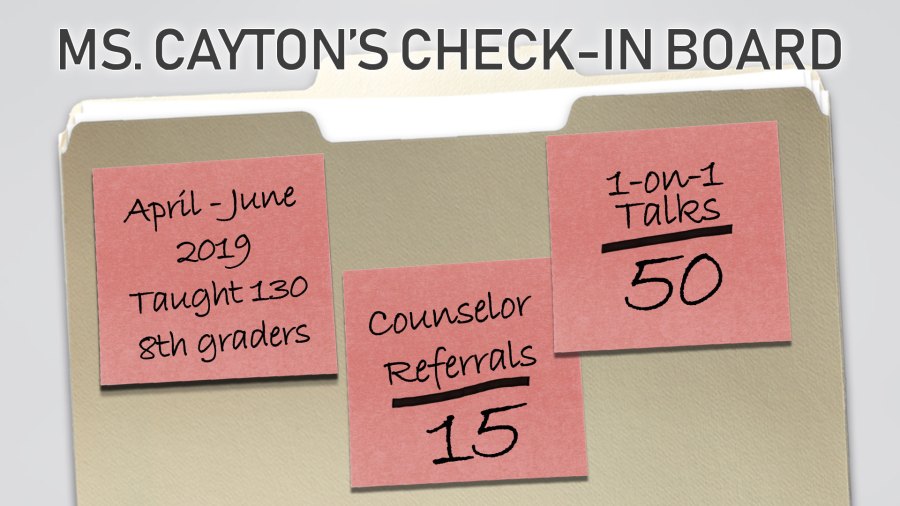
In the first three months she started using the chart, Cayton believes it sparked upwards of 50 one-on-one conversations with students. Of those talks, she ended up referring about 15 students to two school counselors for further support.
Cayton has specific, targeted conversations with any student who puts their post-it note in the bottom two categories: “I’m having a tough time and wouldn’t mind a check-in” and “I’m not doing great.”
A big question she asked herself before she started the board was: How do I use it responsibly? Cayton said it is irresponsible to introduce the concept in a classroom without a plan on how it’s going to work on a daily basis.
Cayton thought through when and how she was going to make time to talk to students who are struggling. When possible, she tries to chat with students organically during class when other students are occupied, or at other times during the day like lunchtime or during passing periods.
She always tries to casually initiate a conversation with a student in a way that doesn’t embarrass or call them out in front of everyone. Cayton picks low-key times to chat effectively without drawing attention to the conversation in front of other students.
When she feels like a situation goes beyond her role as a teacher, Cayton will tell a student, “Because I care about you, I’m going to share this with the school counselor.”
She said the most daunting part is carving out time to talk to students, but it’s also the most crucial.
“You can’t afford to lose instructional time, but you can’t afford to have students who aren’t OK,” Cayton said. “Every teacher should prioritize mental health. Care about your kids. You can’t care about them if you don’t get to know them.”
Additional Q & A with Jessie Cayton
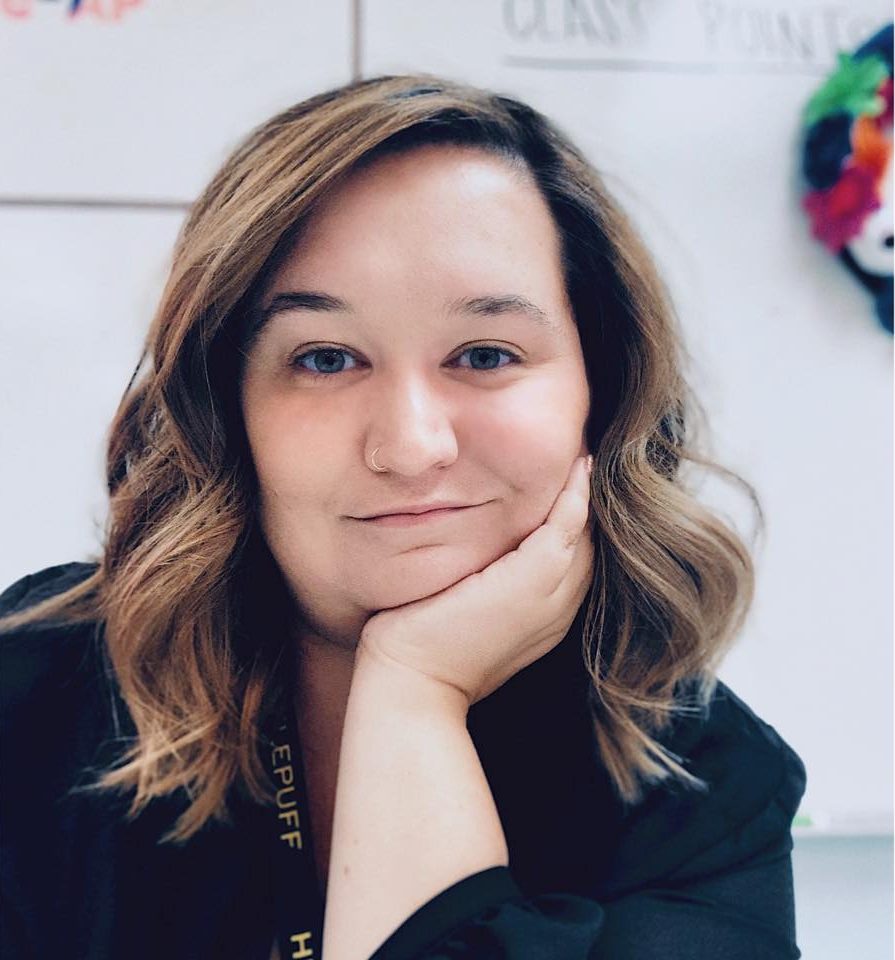
Q: Are there privacy concerns with students turning over post-it notes to read names?
A: Part of it is being well prepared to roll it out. I explained to my students upfront, we’re gonna try this, and here’s what we’re not gonna do: Stare while someone else puts their note up – it’s none of your business. I made the rules clear, and I have been proud of how they’ve honored each other. We did the check-in one day, and a big athletic student put his note on the struggling spot. His best friend saw him do it. I was worried that the student was vulnerable. You could tell his friend wanted to say something. They went to grab their notebooks, and the kid turned to his friend and was like, ‘Bro I’m struggling today.’ He patted him on the back and said, ‘Bro, tell me what’s going on.’ My eyes watered up. It was a moment of vulnerability. I was so proud of them.
Privacy is really important, but also having a visible thing with the chart is the game-changer. It destigmatized [mental health] a bit, and lets students know they’re not the only one feeling a certain way.
Q: What’s the feedback from parents?
A: It’s been great. We are a school on the north side of Lubbock. We have hard-working families who are busy. When kids come home from school, their parents are working two or three jobs, so they don’t have time to really check-in. One mom sent me a message that said, ‘I want to know what you know. When my kids got home I asked them about the [board]. They opened up and shared with me like they’ve never shared before.’ That mom told me she made a check-in board for the fridge!
Q: Do you have your students ‘check-in’ every day?
A: I did it a few times a week when I first introduced the chart. I would tell my class, “Everyone is going to grab a post-it because I care.” Or I would tell them, “There’s post-its at your desk.” I like to do it when kids come back from a long break.
Q: Do you make it mandatory for students?
A: If a child opts out, I respect it, but they’re not exempt from me knowing how they’re doing. I keep track of that and make a point to still check in with that child.











